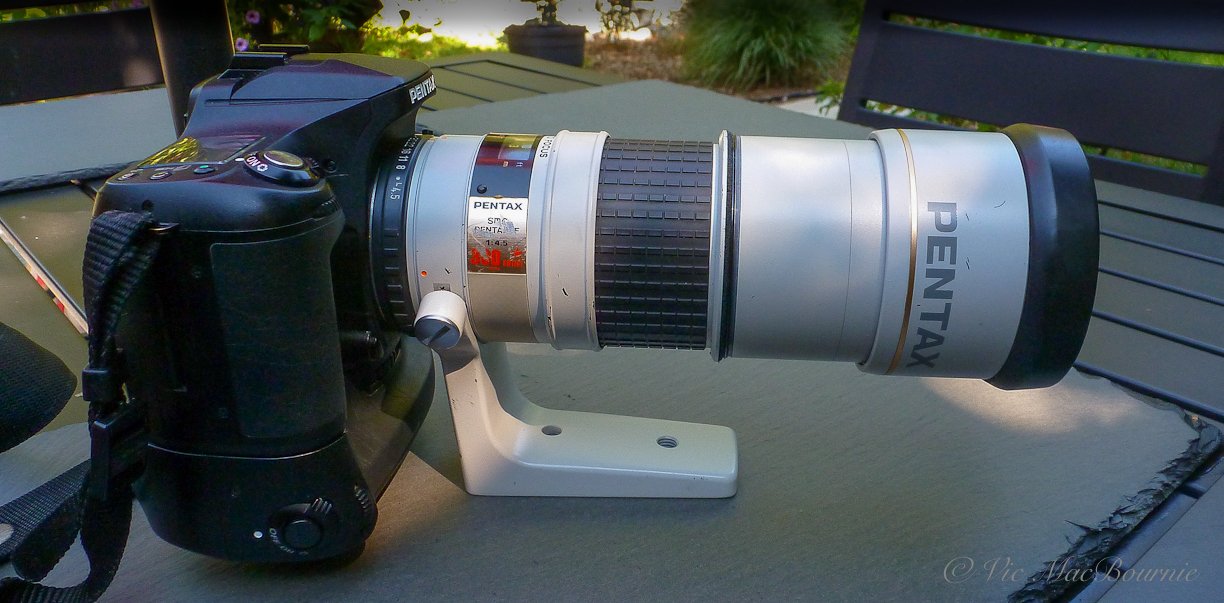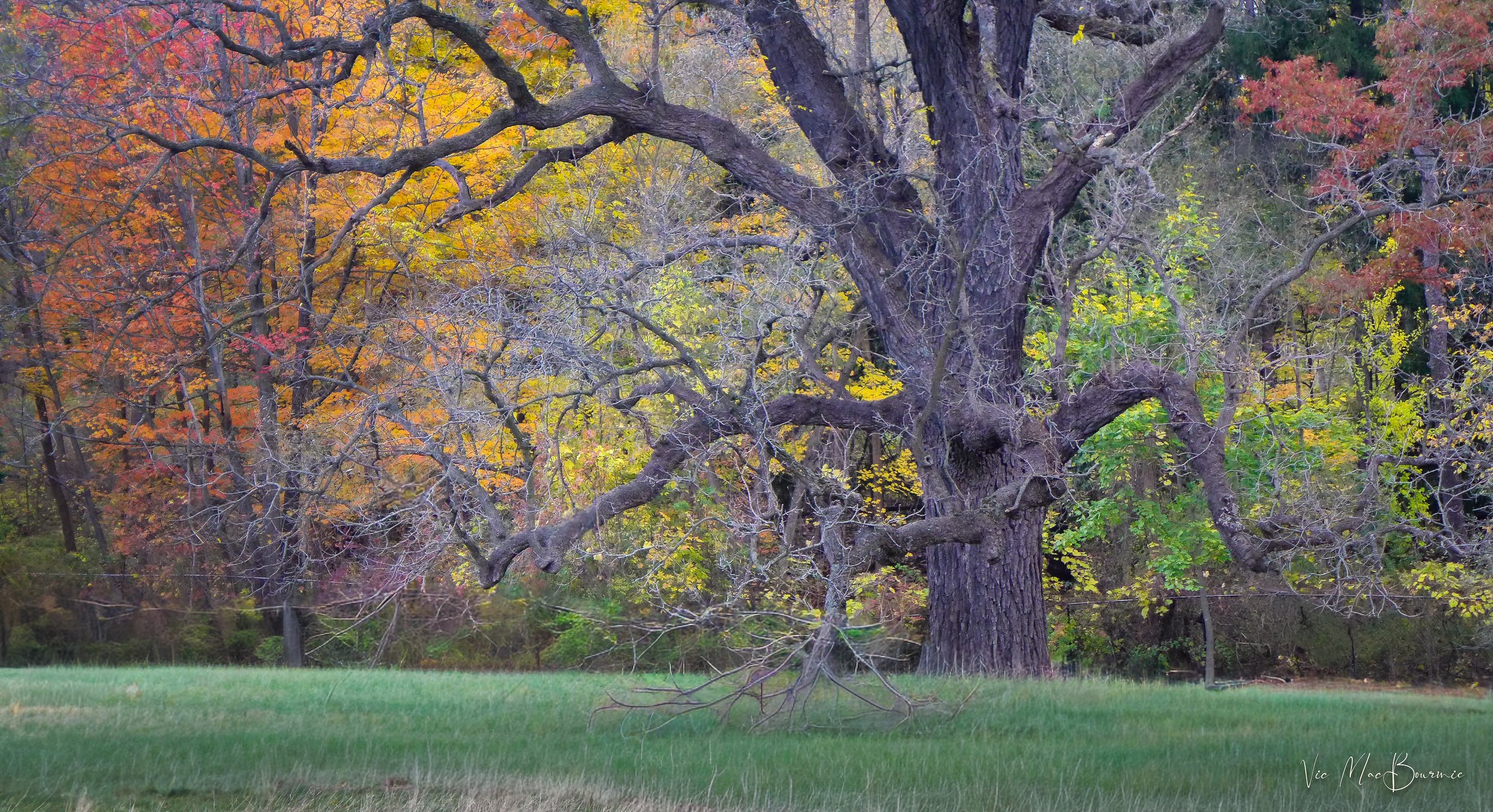Pentax F* 300mm f4.5 ED IF: My favourite wildlife lens
A 300mm lens is the perfect wildlife lens
The Pentax F* 300mm f4.5 ED IF full frame lens is the only lens I reach for when it comes to serious bird or wildlife photography.
My best images time and time again are shot with this 35-year-old lens, with its exquisite glass, outstanding build quality, handsome looks and the most beautiful bokeh I have ever seen. What more can a person hope for?
I’ve shot with this lens for years, but it wasn’t until I began focusing on backyard wildlife that the lens came into its own capturing impressive digital images and proving to me once and for all that there is no reason to upgrade to a more modern lens.
Coyote in winter coat
This loan coyote was captured with the 300mm f4.5 in a woodlot near our home. It was photographed at ISO 3200 on my Pentax K5 at 1/2000 sec, at f6.3. The image was cropped and post processing applied via Lightroom.
It’s not perfect, but nothing is really.
It came into its own recently when, while out looking for snowy owls in the woodland and farmlands around our home.Although the light was failing and the owl was at some distance, the combination of the 300mm, a 1.4 converter and some judicial cropping allowed me to get close enough to capture useable images of the owl.
A cardinal takes a drink from the bird bath. The creamy background is almost as beautiful as the cardinal.
The Pentax 300mm F4.5* lens is neither the fastest at f4.5, nor is it the best auto focusing lens with its ancient screw-drive system, but when it comes to bokeh – that soft milky background we all strive for in our images – I think it’s pretty tough to beat this lens.
Be sure to check out my F* 300mmF4.5 photo gallery to see more images taken with this superb lens.
The Pentax F*300mm F4.5 ED IF is an exceptional, compact 300mm lens with beautiful bokeh that gives me 450mm on a cropped sensor.
A great lens is one that you can shoot wide open and still get sharp images. This compact, all-metal lens, with a heft that tells you it was built when quality of build was at least as important as image quality, is sharp wide open. Stop it down to F8 and it’s tack sharp with even better contrast and colours that will leave you almost speechless – grasping for descriptive words that do it justice. The cropped sensor on my K5 and ist-D cameras gives me the equivalent of a 450mm lens.
A Red Wing Blackbird calls out for a mate in spring.
Imagine a Pentax 300mm mounted on the miniature Pentax Q line of cameras. You can do that but you would end up with a 1500mm F4.5 lens.
For my comprehensive post on the Pentax Q cameras and lenses, check out the Pentax Q, why you need one in 2022.
Even in low light, the Pentax 300mm F4.5 is able to capture the moment, and with a cropped sensor it becomes the equivalent of a 450mm.
If this sounds a little too good to be true, then, by all means, don’t take my word for it.
“Great Image quality and small size really impressed me. Exceptional build quality. Similar image quality to the 77 limited. Love it! This lens alone would keep me with Pentax for ever.”
Consider these comments from the folks on Pentax Forums:
“I can’t add much to the glowing praise of this lens posted by almost every single reviewer on this forum. The 300mm f4.5 F* is sharp enough wide open, becoming razor sharp by f6.7 to f11. Color rendition is outstanding. Chromatic aberration is extremely well controlled. Autofocus performance is as good as any older screw drive lens …”
This white egret was captured in a nearby wetlands with the F* 300mmf4.5 lens.
And more from the Pentax Forums: “As for the quality of the glass, I feel humble and not up to showing it off to it’s full potential. The sharpness and resolution are to my eye amazing. The 300mm focal length gives plenty of reach and while only f4.5, with the low light abilities of modern cameras, I was able to take many shots in what I thought were very challenging low light conditions.”
“Great Image quality and small size really impressed me. Exceptional build quality. Similar image quality to the 77 limited. Love it! This lens alone would keep me with Pentax for ever.”
“This is the lens everyone should dream on.”
The red squirrel was photographed at the outdoor photo studio/reflection pond with the F* 300F4.5 lens.
In the world of Pentax, this lens has a cult following.
And why not?
Its compact size makes it easy to carry even on long hikes.
Its built-in tripod mount features a high mount that rotates to quickly allow for vertical images.
Its built-in lens hood can be left non-extended maintaining the lens’s compact size, or extended out to provide excellent coverage. An added bonus is the rubberized front that prevents damage both to the lens and the hood itself.
Its handsome looks, complete with the brand name stamped on its antique-white hood, announces that you are shooting with a premium product.
Its full-frame design means you are shooting with a 420mm on APS-C sensor cameras like the highly praised K5 (and my ancient *ist-d.
The gold emblem on the side of the lens screams classy, high-end lens.
The 67mm filter size is a common enough size that you either have in your collection of filters, or can find high-end B&W filters used on ebay or at your local camera store.
Manual focus is put into gear by a solid shift of the collar on the barrel of the lens. Shifting into manual focus is just the beginning of the satisfaction of using the lens in manual mode. Focusing is smooth with just enough resistance to make you think you are using a classic SMC manual focus M-series lens.
Add a 1.4 converter and not only is it still sharp, but it becomes a fast super telephoto lens in the 580mm range.
The bokeh of this lens takes centre stage in this image of a blue jay in our crabapple tree.
I could go on forever but what really matters is how this thing handles out in the field.
Similar modern 300mm lenses are available for Canon Amazon link ( Adorama link) Shop Canon direct; Sony Amazon Link (Adorama Link)(Keh Camera Used) (B&H Photo link); Nikon Amazon link (Adorama Link) (B&H Photo) and Fuji Amazon Link (Adorama link) and, of course, Pentax Amazon link (Adorama Link) so be sure to check them out.
A cottontail stops eating to have its picture taken.
How I like to use the F*300mm F4.5
I like to combine the 300mm focal length on a tripod attached to either my Pentax K5 or ist-d converting it into a 420mm F*4.5.
While this is often enough to capture many of the more friendly birds, chipmunks, red squirrels deer and fox that are regular visitors to the yard, adding a Tragopan photographic blind into the mix along with an outdoor, natural photo studio brings out the magic this lens has to offer.
Be sure to check out my full post on the Tragopan photographic blind.
The lens is exceptional but getting subjects in front of it is key to letting it shine.
The Tragopan blind, together with the home-made photo studio, is almost like bringing an endless line of beautiful models in front of your lens with the background of your choosing.
A red squirrel in winter at the outdoor photo studio where I included grass seed heads from native Northern Oat grass.
The blind gets me extremely close to the subjects. The reflection pond/photo studio puts the subjects in the perfect photographic environment, and one I can easily change for seasonal interest.
In the blind, I set the lens, which is on the heavy side at more than 1200 grams, on a tripod.
Add some well-hidden bird seeds behind a stone or lichen-covered tree branch and get ready for action.
The water itself is a great way to bring in birds and small mammals to a specific location. When I’m not inside the blind photographing the action at the photo studio, the reflection pond becomes a bird bath keeping the birds accustomed to the water feature.
Be sure to check out my post on building a DIY outdoor photographic blind.
A chipmunk appears to almost be praying as she looks into the lens. But look at that bokeh in the background.
The setup allows me to maximize the possibilities of the lens. Add an external flash, a polarizing filter; shoot wide open or stop it down to F8 or F16. Heck, I’ve even experimented with the camera’s built-in filters to create interesting effects.
I’ve also used the blind together with the F*300 F4.5 to capture images of our local fox. Although it is not particularly skittish, by using the blind and the 300mm, I’m able to capture the fox in a more intimate and natural environment.
If I’m out it the field or shooting birds in flight, I’ll often put the lens on a monopod to allow a little more flexibility.
Although I like to think of the lens as primarily a wildlife and birding lens, I will also pull it out to photograph flowers if I’m trying to create beautifully soft backgrounds. The lens has the ability to isolate flowers growing in a busy environment.
It also can be used for larger butterflies and other insects. Although its close-focusing abilities are good at 2 meters, with a maximum magnification at 0.17x, the addition of extension tubes can get you in close. The added magnification of the APS-C sensor enhances the ability to capture smaller insects and butterflies.
Skunk up close and personal with the F*300mm 4.5 lens.
Information below is from the Pentax Forums website
Image Format: Full-frame / 35mm film
Lens Mount: Pentax K
Aperture Ring: Yes (A setting)
Diaphragm: Automatic, 8 blades
Optics: 9 elements, 7 groups, (including 3 ED elements)
Mount Variant: KAF
Max. Aperture: F4.5 – Min. Aperture F32 Focusing
Auto Focus (screwdrive)Min. Focus: 200 cm Max. – Magnification 0.17x
Filter Size: 67 mm
Internal Focus: Yes
Field of View (Diag. / Horiz.) APS-C: 5.5 ° / 4.6 °
Full frame: 8.2 ° / 6.9 °Hood: Built-in, slide out
Weather Sealing: NoOther Features: Push-pull AF/MF Focusing Ring,
Tripod Mount Diam x Length
84 x 160 mm (3.3 x 6.3 in.)Weight
880 g (31 oz.) w/ Tripod Foot: +240gProduction Years: 1987 to 1991
Engraved Name: smc PENTAX-F* 1:4.5 300mm ED[IF]


























Adding a creative touch with Luminar Neo and Lensbaby lenses.